
The allure of the automobile has always been tied to its ability to transport us, not just physically, but imaginatively, into a future we can only dream of. For decades, auto shows served as grand spectacles where this imagination ran wild, bringing forth visions of tomorrow in the form of breathtaking concept cars. These magnificent machines were more than mere vehicles; they were automotive fantasies brought to life, unconstrained by the usual practical limitations, conceived primarily to propose radical new technologies and styling ideas in exhilarating, often non-production-ready packages. They served as a canvas for experiments in novel methods of manufacture, the innovative use of new materials, and even revolutionary forms and configurations of the car itself, pushing the boundaries of what was thought possible.
However, the once-vibrant landscape of American auto shows has undergone a significant transformation over the past few decades, evolving from bustling, must-attend gatherings into what many now perceive as mere shadows of their former selves. Historically, events like the Detroit Auto Show and the LA Auto Show attracted thousands of enthusiasts, industry professionals, and curious onlookers, eager to witness the cutting edge of automotive design and technology. Yet, recent trends paint a stark picture, with reports from the Automotive Industry Association indicating a nearly 30% drop in attendance at major auto shows over the last decade, a decline exacerbated by shifts in marketing strategies and consumer behavior.
This profound shift leaves us with a compelling question: what about those magnificent concept cars that once stole the spotlight, hinted at futures that never quite arrived, and then quietly vanished from public view? Tucked away in dusty archives or museum corners, forgotten by many, these machines once had crowds staring, jaws dropping, and dreams shifting into overdrive. From the space-age marvels of the mid-20th century to the sophisticated designs of the last thirty years, they reflected significant advancements and evolving predictions of motorists’ future needs, desires, and tastes. Join us as we embark on a journey to rediscover some of the most powerful and visionary concepts that captivated the world, only to disappear, and ponder if their spirit, if not their exact form, will ever truly be built now.
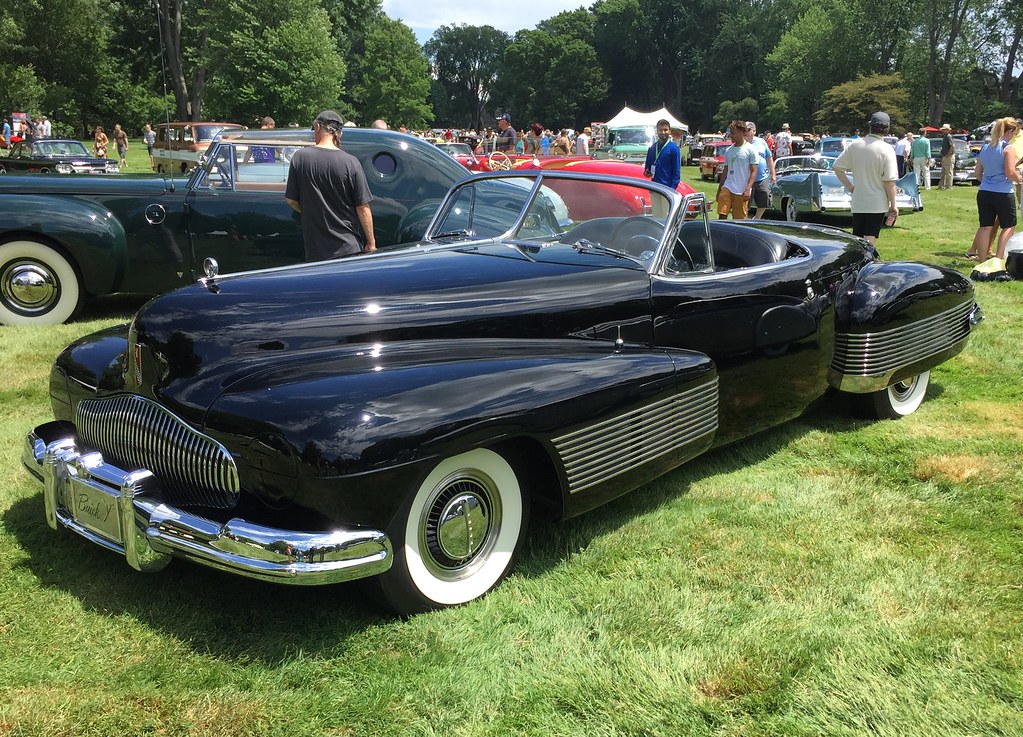
1. **Buick Y-Job**:Harley Earl’s masterpiece from 1938 wasn’t just a car; it was a revolution on wheels, rightfully earning its place as the undisputed grandfather of all American concept cars. At a time when most automobiles still adhered to a rather boxy, functional aesthetic, the Y-Job dared to dream of a sleeker, more integrated future. Its debut immediately signaled a shift in automotive design philosophy, proving that a car could be a canvas for genuine artistic expression and technological foresight.
This sleek convertible introduced a host of features astonishingly ahead of its time, defining luxury and innovation for decades. Among its most striking innovations were the hidden headlights, offering a remarkably cleaner, more aerodynamic front profile when not in use. It also boasted electric windows, a level of convenience unheard of for the era, and flush door handles seamlessly integrated into the bodywork. These elements contributed to the car’s remarkably smooth and futuristic appearance, setting a new benchmark for automotive aesthetics.
What truly solidified the Y-Job’s legendary status was its functional longevity; General Motors actually used this beauty as Harley Earl’s daily driver for years after its debut. This practical application directly challenged the notion that concept cars were purely theoretical exercises, proving that advanced design and innovative features could indeed function effectively in everyday scenarios. The Y-Job’s profound influence echoed through Buick’s design language for decades, a testament to its enduring legacy as a pivotal moment in American automotive design and a beacon of innovation.
Read more about: The Road Not Taken: 13 Revolutionary Concept Cars That Refused to Hit Production
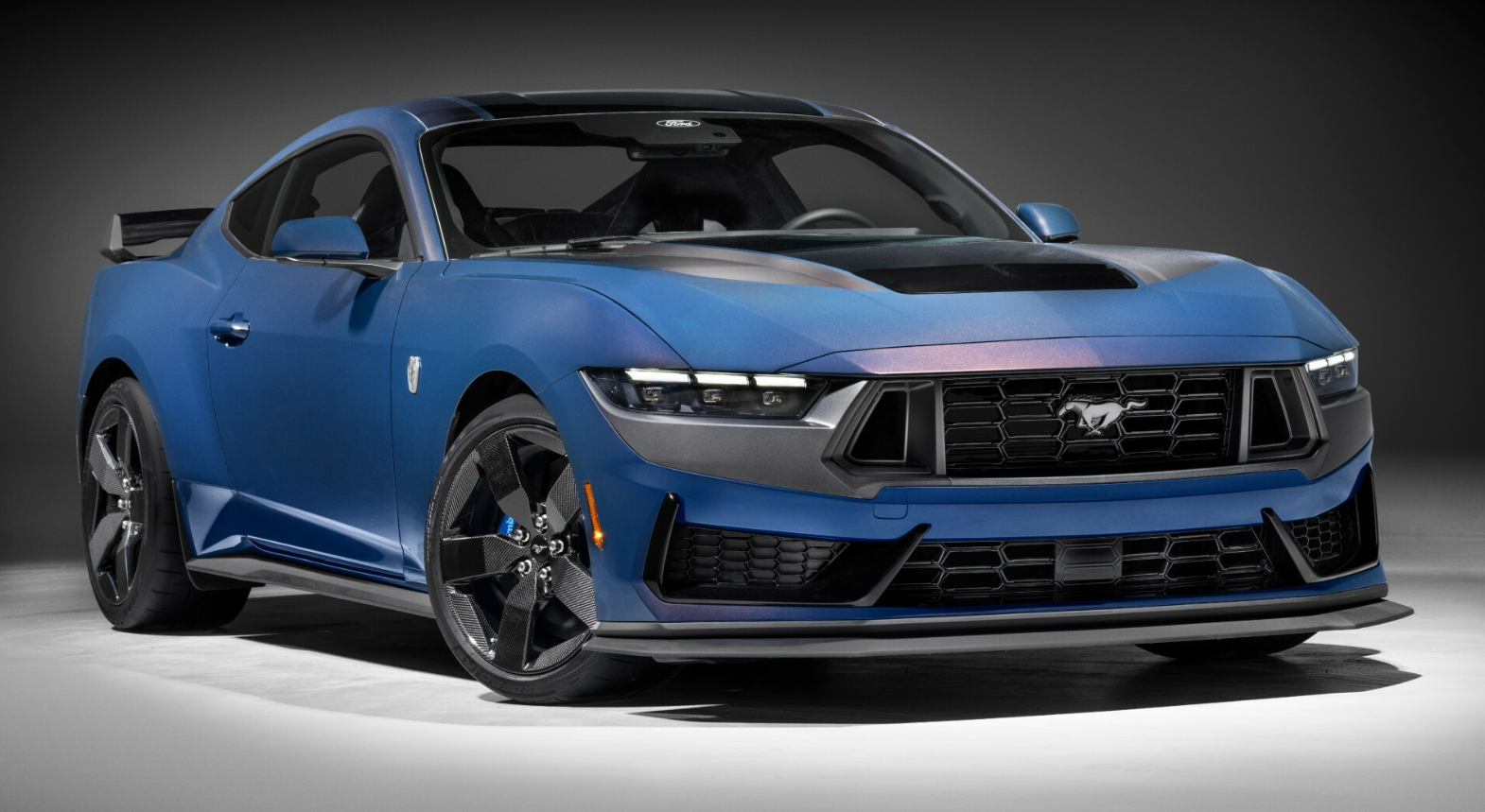
2. **Ford Nucleon**:In an era of boundless optimism about atomic power, Ford unveiled the Nucleon in 1958, a concept car that proposed replacing the conventional gasoline engine with a miniature nuclear reactor nestled in the trunk. The very notion of radiation on the road seems fantastical now, but in the mid-20th century, engineers genuinely believed nuclear energy would soon power everything from homes to vehicles, including personal transportation. It was a vision born directly from the era’s widespread enthusiasm for the atom’s potential.
The Nucleon’s distinctive design was fundamentally driven by its revolutionary propulsion system. Its prominent, submarine-inspired rear section was specifically conceived to house this hypothetical reactor, emphasizing the massive technological shift it represented. The concept’s engineers articulated an ambitious claim: this nuclear core would theoretically need refueling only once every 5,000 miles, promising unparalleled range and an almost complete liberation from traditional gasoline stations. This visionary propulsion system aimed to decisively solve the energy challenges of the era.
Thankfully, this radioactive road warrior never progressed beyond the meticulously crafted scale model stage. While it stands as a fascinating artifact of mid-century ingenuity, the practicalities, colossal safety concerns, and the sheer complexity of a mobile nuclear reactor proved to be insurmountable obstacles. One can only imagine the nightmarish scenarios, from routine fender benders to catastrophic accidents, had such a vehicle ever reached production. In this instance, its status as a “vanished” concept is, perhaps, a collective relief.
Read more about: Director’s Cut: 13 Concept Cars That Embody Steven Spielberg’s Visionary Future
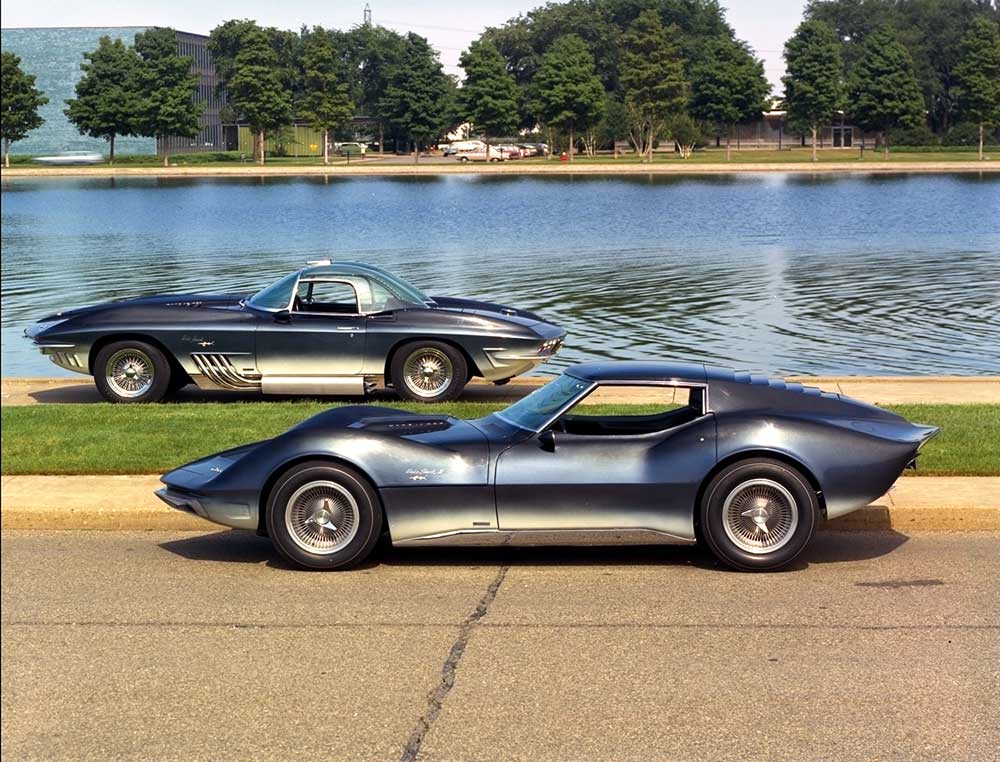
3. **Chevrolet XP-755 Mako Shark**:The legend behind the 1961 Chevrolet XP-755 Mako Shark is almost as captivating as the car’s striking design itself. Bill Mitchell, the formidable and famously eccentric GM design chief, reportedly became utterly obsessed with faithfully recreating the precise colors and predatory, fluid shape of a mako shark he caught during a fishing expedition. This deep-sea inspiration translated into one of the most aggressive, aerodynamic, and visually stunning concept cars of its time.
Translating the mako shark’s natural blue-to-white gradient onto a car’s bodywork proved to be a significant challenge for the painting team. The story, now etched into automotive folklore, goes that they struggled so intensely that they supposedly snuck into Mitchell’s office and painted his prized mounted mako shark to precisely match the car’s evolving hues. This extraordinary anecdote highlights the extreme dedication to detail and the profound artistic passion that underpinned its creation.
The Mako Shark was more than just a pretty face; it was an exercise in aggressive styling and performance-oriented design. Its pointed nose, wide stance, and distinctive gill-like side vents were direct visual cues inspired by its powerful underwater namesake, conveying a sense of speed and agility even when static. Unveiled to an eager public, this aggressive beauty immediately captivated audiences and directly influenced the design of one of America’s most iconic sports cars: the 1963 Corvette Sting Ray.
Car Model Information: 2023 Alfa Romeo Stelvio Ti
Name: Mako Shark Concept
Caption: Mako Shark II in front of the first — ,GM Technical Center in Warren, Michigan
Manufacturer: Chevrolet
Production: 1962
Class: Concept car,sports car
BodyStyle: convertible (car)
Related: Chevrolet Corvette (C2),Chevrolet Corvette (C3)
Designer: Bill Mitchell (designer),Larry Shinoda
Categories: All articles with style issues, Articles with short description, Chevrolet Corvette, Chevrolet concept vehicles, Commons category link is locally defined
Summary: The XP-755 concept car, also known as the Mako Shark, was designed by Larry Shinoda under the direction of General Motors Styling and Design head Bill Mitchell. With the 1963 Corvette C2 design locked down, in 1961 as a concept for future Chevrolet Corvette the groundwork for the XP-755 was laid down. Building on the design of the 1958 XP-700 “double bubble”, the XP-755 added design elements of the soon to be released C2 Corvette. In keeping with the name, the streamlining, pointed snout, and other detailing was partly inspired by the sleek, fast-moving shortfin mako shark. The ’61 Corvette tail was given two additional tail lights (six total) for the concept car. The concept was also inspired by Bill Mitchell’s 1959 Stingray racer XP-87 which also influenced the 1963 Corvette Sting Ray. Charles M. Jordan’s son, Mark reports that the XP-755 was built out of the 1958 XP-700 Corvette show-car.
The Mako Shark debuted at the New York Coliseum at the 1962 6th International Automobile Show, and the car was a success on the auto show circuit. With many of the Mako’s design elements making into production on future Corvettes, it was successful in building hype for the forthcoming next generation of Corvette.
Like many show cars, the Mako Shark underwent styling and detail changes over time. The hood and front facia were modified and the interior was updated. The car also lost the distinctive “double-bubble” canopy. The car was retroactively dubbed the Mako Shark I when the Mako Shark II debuted. The car now resides in the GM Heritage Collection.
Get more information about: Mako Shark (concept car)
Buying a high-performing used car >>>
Brand: Chevrolet Model: XP-755 Mako Shark
Price: $31,450 Mileage: 29,946 mi.
Read more about: Director’s Cut: 13 Concept Cars That Embody Steven Spielberg’s Visionary Future

4. **Dodge Firearrow IV**:Virgil Exner’s stunning 1954 creation, the Dodge Firearrow IV, represented a peak moment in post-war American automotive styling and came tantalizingly close to full production. This concept car showcased a refined blend of clean, elegant lines and a distinct European flair, elements that were central to Chrysler’s groundbreaking “Forward Look” design philosophy. As the fourth and final iteration of the ambitious Firearrow series, this striking red beauty was a testament to sophisticated styling and a serious bid for American manufacturers to compete aesthetically with revered European sports cars.
The Firearrow IV was more than a mere static display piece; its inherent appeal was so strong that it captured the imagination of wealthy automotive enthusiast Eugene Casaroll. So smitten was Casaroll with its design and potential that he took the extraordinary step of purchasing the rights to produce the car. This marked a unique transition from concept to a bespoke, limited-production luxury vehicle. Casaroll subsequently commissioned a slightly modified version, which he brought to life under the name Dual-Ghia, successfully translating the Firearrow’s captivating essence into a tangible, if exclusive, automobile.
Only a precious few—117, to be exact—of these transformed Firearrows, or Dual-Ghias, were ever built. Despite their extreme rarity, these vehicles quickly achieved legendary status, particularly among Hollywood’s elite. They became coveted favorites of discerning celebrities, including none other than Frank Sinatra and prominent members of the iconic Rat Pack. The Firearrow IV, though not reaching full mass production under the Dodge brand, powerfully demonstrated how a compelling concept could inspire niche manufacturing and secure its place in automotive lore.

5. **Pontiac Banshee**:In 1964, John DeLorean, a figure synonymous with bold automotive ambition, inadvertently created a concept car that was, arguably, *too* good: the Pontiac Banshee. This sleek, two-seater sports car was meticulously engineered to be lighter, boast potentially superior performance, and crucially, be significantly cheaper to produce than the Chevrolet Corvette, which at the time reigned supreme as GM’s unchallenged golden child in the sports car segment. It represented a pure vision of performance and accessible style, poised to disrupt the internal hierarchy of General Motors.
However, it was precisely its perceived excellence and disruptive potential that sealed the Banshee’s unfortunate fate. Powerful executives within General Motors harbored profound fears that the Banshee would directly cannibalize Corvette sales, undermining a flagship model they were absolutely unwilling to compromise. In a decisive, albeit heartbreaking, corporate move, orders were issued for all prototypes to be summarily destroyed, exemplifying how corporate politics often override pure innovation, stifling designs that challenge established product lines.
Miraculously, and against all corporate directives, two prototypes defied the destruction order and survived: a striking white coupe and an equally captivating silver convertible. These incredibly rare survivors now stand as tangible, living evidence of what could have been. Although the Banshee itself never saw mass production, its profound and innovative design DNA lived on, subtly yet significantly influencing subsequent generations of GM sports cars, most notably manifesting in design cues found in the iconic 1968 Corvette and the distinctive third-generation Pontiac Firebird.
Read more about: Director’s Cut: 13 Concept Cars That Embody Steven Spielberg’s Visionary Future

6. **Oldsmobile Golden Rocket**:Unveiled in 1956, a full year before the launch of Sputnik ignited the space race, the Oldsmobile Golden Rocket was a concept car that appeared utterly poised for interplanetary travel. Its distinctive gold-colored, missile-shaped body, crowned with a signature bubble cockpit and adorned with dramatic, sweeping fins, unequivocally declared “cosmic cruiser.” This extraordinary concept epitomized the unbridled space-age optimism that permeated the mid-1950s, a remarkable period when the future seemed limitless and technological advancement was accelerating at a dizzying pace.
The Golden Rocket was far more than merely a stylistic exercise in futuristic aesthetics; it ingeniously incorporated advanced features that were remarkably ahead of its time. For instance, the seats would automatically swivel outward as the doors opened, greatly facilitating easier entry and exit—a sophisticated convenience feature that many modern luxury cars are only now beginning to adopt. Furthermore, the dashboard was designed to move in conjunction with the steering wheel, ensuring the driver maintained a perfect and unobstructed view of all gauges and instruments.
Though the Golden Rocket itself never advanced to full production, its astronomical styling had a profound and undeniable influence on Oldsmobile’s production models of the late 1950s. The dramatic fins, sleek, almost aerodynamic lines, and the pervasive sense of forward momentum and futuristic aspiration filtered directly down into the brand’s road-going vehicles. This concept car played a pivotal role in defining Oldsmobile’s identity during one of the most memorable and stylistically bold eras of American automotive design.
Car Model Information: 2023 Alfa Romeo Stelvio Ti
Name: Oldsmobile Golden Rocket
Aka: XP-400 / SO 2490
Manufacturer: Oldsmobile
Class: Sports car
ModelYears: concept car
Production: one prototype built
BodyStyle: fastback
Layout: FR layout
Engine: 324 cuin
Abbr: on
Power: 275 hp
Transmission: Hydramatic,Automatic transmission
Wheelbase: 105 in
Length: 201.1 in
Width: 75.4 in
Height: 49.5 in
Weight: convert
Predecessor: Oldsmobile Cutlass (concept car)
Designer: Harley Earl
Sp: us
Categories: Articles with short description, Cars introduced in 1956, Oldsmobile concept vehicles, Short description matches Wikidata, Space Age
Summary: The Oldsmobile Golden Rocket was a two-seater show car built by Oldsmobile for the 1956 General Motors Motorama. The radically styled fiberglass concept, designed to resemble a rocket on wheels, was revised several times and displayed at various other auto shows, most notably at the 1957 Paris Motor Show where it generated much fanfare, 18 months after it was first revealed. The car was featured in the promotional short film Design for Dreaming along with the rest of the 1956 General Motors lineup.
Get more information about: Oldsmobile Golden Rocket
Buying a high-performing used car >>>
Brand: Oldsmobile Model: Golden Rocket
Price: $31,450 Mileage: 29,946 mi.
Read more about: 15 Undervalued 1970s Classic Cars That Are Smart Buys for Enthusiasts Today
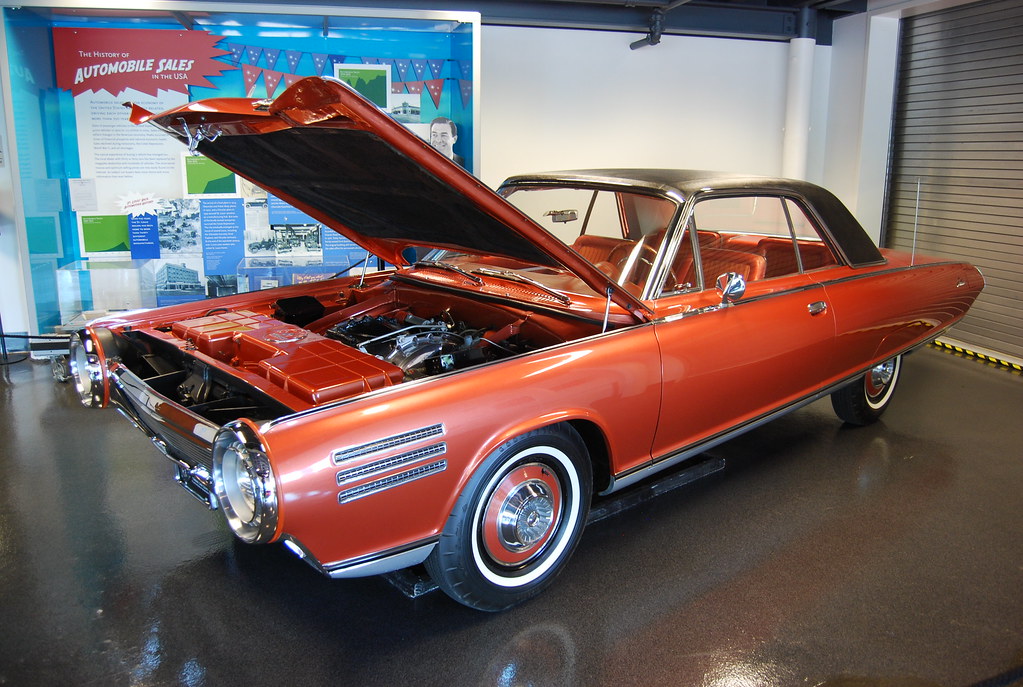
7. **Chrysler Turbine Car**:Imagine a car that boasted the incredible versatility of running on virtually any flammable liquid—from high-octane gasoline to seemingly improbable fuels like tequila, perfume, or even humble peanut oil! Chrysler’s copper-colored marvel from 1963 was not merely an exotic vision of futuristic mobility; it harbored a groundbreaking jet turbine engine, unequivocally making it one of the boldest and most ambitious automotive experiments ever undertaken. The distinctive, almost ethereal whooshing sound produced by its innovative engine earned it the evocative and memorable nickname, “the flying living room.”
In an unprecedented and remarkably audacious move for a concept vehicle program, Chrysler made the extraordinary decision to actually build fifty of these remarkable turbine-powered cars. These fifty vehicles were then loaned to everyday American families across a diverse range of demographics for an extensive and rigorous period of real-world testing. This ambitious program was designed to meticulously assess the practical viability and public perception of turbine power in consumer vehicles, gathering invaluable, firsthand feedback on every aspect of its performance, reliability, and widespread public acceptance under normal, daily driving conditions.
Despite its innovative spirit, the immense excitement it generated, and the valuable data collected, the Chrysler Turbine Car program ultimately faced insurmountable challenges that led to its cessation. Primarily, the vehicles demonstrated poor fuel economy in typical stop-and-go driving scenarios, a critical drawback for a consumer product. Additionally, the prohibitively high manufacturing costs associated with producing such advanced turbine engines proved too great for mass production feasibility. Tragically, most of the cars were destroyed afterward, with only nine precious examples surviving today, serving as powerful reminders of a daring technological foray and Chrysler’s audacious attempt to redefine the automobile.
As we continue our journey through the annals of automotive fantasy, we unearth more incredible concepts that promised to redefine our driving experience but ultimately vanished into legend. These vehicles, from high-performance machines to luxurious land yachts and space-age marvels, pushed the boundaries of engineering and design, leaving an indelible mark on the industry, even if they never made it to your driveway.
Car Model Information: 2023 Alfa Romeo Stelvio Ti
Name: Chrysler Turbine Car
Assembly: Detroit,United States
Caption: Walter P. Chrysler Museum
Manufacturer: Chrysler Corporation
Production: 1963–1964,55 produced
Class: Concept car
BodyStyle: coupé
Layout: Front-engine, rear-wheel-drive layout
Engine: Chrysler turbine engines
Width: 72.9 in
Abbr: on
Height: 53.5 in
Wheelbase: 110 in
Length: 201.6 in
Weight: convert
Designer: Elwood Engel
Transmission: TorqueFlite
Categories: Articles with Internet Archive links, Articles with short description, Cars powered by gas turbines, Chrysler concept vehicles, Chrysler vehicles
Summary: The Chrysler Turbine Car is an experimental two-door hardtop coupe powered by a turbine engine and was manufactured by Chrysler from 1963 to 1964. Italian design studio Carrozzeria Ghia constructed the bodywork, and Chrysler completed the final assembly in Detroit. A total of 55 cars were manufactured: five prototypes and a limited run of fifty cars for a public user program. All have a signature metallic paint named “turbine bronze”, roughly the color of root beer. The car was styled by Elwood Engel and Chrysler studios. They featured power brakes, power steering, and a TorqueFlite transmission.
The Chrysler turbine engine program that produced the Turbine Car began during the late 1930s and created prototypes that completed long-distance trips in the 1950s and early 1960s. The A-831 engines that powered the Ghia-designed Turbine Car could operate on many fuels, required less maintenance, and lasted longer than conventional piston engines. However, they were much more expensive to produce.
After testing, Chrysler conducted a user program from October 1963 to January 1966 that involved 203 drivers in 133 cities in the United States cumulatively driving more than one million miles (1.6 million km). The program helped the company determine problems with the cars, notably with their complicated starting procedure, relatively unimpressive acceleration, and sub-par fuel economy and noise. The experience also revealed the advantages of the turbine engines, including their remarkable durability, smooth operation, and relatively modest maintenance requirements.
After the user program ended in 1966, Chrysler reclaimed the cars and destroyed all but nine; Chrysler kept two cars, six are displayed at museums in the United States, and one is in comedian Jay Leno’s private collection. Chrysler’s turbine engine program ended in 1979, mainly due to the failure of the engines to meet government emissions regulations, relatively poor fuel economy, and as a condition of receiving a government loan in 1979.
Get more information about: Chrysler Turbine Car
Buying a high-performing used car >>>
Brand: Chrysler Model: Turbine Car
Price: $31,450 Mileage: 29,946 mi.
Read more about: Beyond the Hype: 14 Underrated Sports Cars Every Enthusiast Should Discover
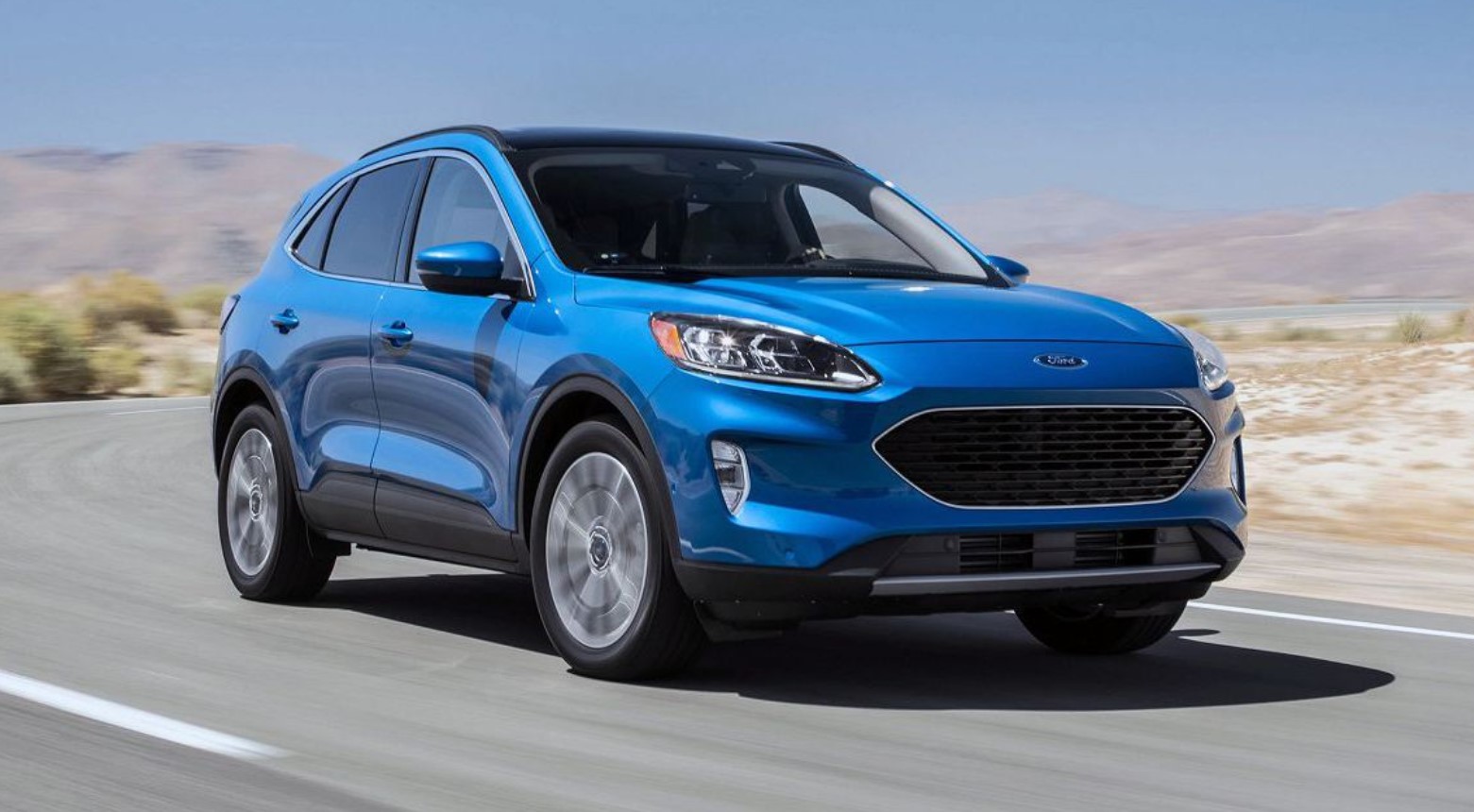
8. **Ford Indigo**:Racing fans were absolutely electrified when Ford pulled back the curtain on the low-slung Indigo in 1996. This wasn’t just another flashy show car; it was a deeply serious piece of engineering, developed with direct assistance from the renowned Reynard racing team. At its heart, the Indigo packed a high-revving, ear-splitting V12 engine, strategically mounted behind the cockpit, mimicking the precise layout of a true, purpose-built race car.
Its design was nothing short of a road-legal Formula One machine, complete with exposed wheels and a daring central driving position that immediately signaled its pure performance intentions. The Indigo blurred the lines between track and street, showcasing Ford’s ambition to infuse genuine racing pedigree into a concept that was both functional and visually arresting. It was a clear statement about performance and pushing the envelope of what a street-legal vehicle could aspire to be.
Ford wasn’t content with just a static display model; they actually built two distinct versions of the Indigo. One was a meticulously crafted show car, designed to dazzle under the bright lights of auto expos, while the other was a fully functional prototype. This incredible working model was capable of hitting a blistering 170 mph, demonstrating that the Indigo’s aggressive looks were backed by serious performance credentials.
For many, the Ford Indigo’s legacy extends beyond physical auto shows, having carved out a significant niche in the world of video games. It made memorable appearances in several popular racing titles, including the *Ford Racing* series. This digital immortality ensured that a generation of enthusiasts could experience the thrill of its advanced design and imagined capabilities, keeping its spirit alive even if the car itself remained an unbuilt dream.
Read more about: Beyond the Bite: 12 Simple, Actionable Ways to Rodent-Proof Your Car’s Engine and Wiring

9. **Cadillac Sixteen**:In 2003, Cadillac unveiled a concept that redefined automotive excess and luxury: the jaw-dropping Cadillac Sixteen. This magnificent vehicle didn’t just revive a legendary name from Cadillac’s past; it amplified it, presenting a vision of opulent power and handcrafted sophistication that commanded attention. It was a bold statement about American luxury reimagined for the 21st century.
The heart of this automotive behemoth was its appropriately massive 13.6-liter V16 engine, a powerhouse designed to deliver an astonishing 1,000 horsepower. This engineering marvel wasn’t just about brute force; it was a testament to Cadillac’s commitment to pushing the boundaries of engine technology, even if its sheer scale seemed almost fantastical for a production vehicle.
The interior of the Sixteen was nothing short of a masterpiece of craftsmanship and luxury. It featured meticulously handcrafted details, including bespoke Bulgari instruments that added an unparalleled touch of elegance. The cabin was adorned with more genuine wood than many small forests, creating an ambiance of unparalleled richness and comfort. At nearly 19 feet long, this modern land yacht exemplified grandeur on an epic scale.
One of its most innovative technological features was its advanced cylinder deactivation system, allowing the massive V16 to run on just four, eight, or all sixteen cylinders, dynamically adapting to power needs for efficiency. While the Cadillac Sixteen proved too audacious and grand for mass production, its incredibly bold design language exerted a profound influence, shaping the aesthetic direction of Cadillac’s production models for the entire following decade.
Read more about: The Road Not Taken: 13 Revolutionary Concept Cars That Refused to Hit Production

10. **Plymouth XNR**:Virgil Exner, a name synonymous with pushing design envelopes, created his personal playground of automotive eccentricity with the 1960 Plymouth XNR. This concept roadster featured an unapologetically driver-focused asymmetrical design that, by today’s safety standards, would surely raise a few eyebrows. It was a vehicle that dared to defy conventional notions of balance and proportion.
The XNR’s most striking visual characteristic was its dramatic, almost predatory fin, prominently located on the driver’s side, while the passenger side remained distinctively flat. This deliberate imbalance wasn’t merely a stylistic flourish; it was an artistic expression of speed and individuality, making the car instantly recognizable and truly unique on any auto show floor. It was a rolling sculpture conceived for the thrill of driving.
Beneath its unconventional skin, the XNR was built on a modified Valiant chassis, proving that even a platform from a more humble production car could be transformed into something extraordinary. Its engine, a slant-six, was expertly tuned to produce a spirited 250 horsepower, a considerable output for its time and an impressive feat for a six-cylinder unit. This blend of radical design and surprising performance made the copper roadster a standout.
After completing its tour of the auto show circuit, the XNR embarked on an incredible journey, being sold to none other than the Shah of Iran. It was later smuggled out of the country during the revolution, a testament to its enduring allure and unique status. Eventually, this one-of-a-kind creation was meticulously restored to its original glory, allowing enthusiasts today to appreciate Exner’s audacious vision.
Read more about: Lost Wonders of the Chrome Age: 14 Vanished ’60s Concept Cars That Defined Automotive Dreams

11. **GM Firebird III**:In 1958, General Motors unveiled a concept that completely reimagined the automobile, making conventional steering wheels seem utterly passé. The GM Firebird III replaced traditional controls with a revolutionary joystick, ingeniously dubbed the “Unicontrol.” This single-hand control system was designed to handle steering, acceleration, and braking, offering a futuristic and intuitive driving experience that was decades ahead of its time.
Visually, the Firebird III was an absolute marvel, appearing more akin to a fighter jet than a family car. Its iconic bubble canopy and no less than seven dramatic fins proclaimed its space-age aspirations, reflecting the era’s fascination with rocketry and aviation. This striking design was a bold statement about where personal transportation could be headed, blending aeronautical aesthetics with automotive engineering.
Powering this extraordinary space-age oddity was a gas turbine engine, showcasing GM’s commitment to exploring alternative propulsion systems. Beyond its radical powertrain, the Firebird III boasted an array of advanced features that are commonplace today but were pure science fiction in the Eisenhower era. These included integrated air conditioning, cruise control, and even anti-lock brakes, demonstrating remarkable foresight in automotive technology.
Perhaps one of its most innovative and luxurious touches was an ultrasonic key system, capable of automatically opening the doors as the driver approached the vehicle. This seamless entry system, operating on proximity, highlighted the Firebird III’s dedication to convenience and technological sophistication, predicting a level of integration between car and driver that is still being refined in modern vehicles.
Read more about: The Unwanted Legacy: 14 Classic Sedans and Muscle Cars Younger Buyers Are Steering Clear Of
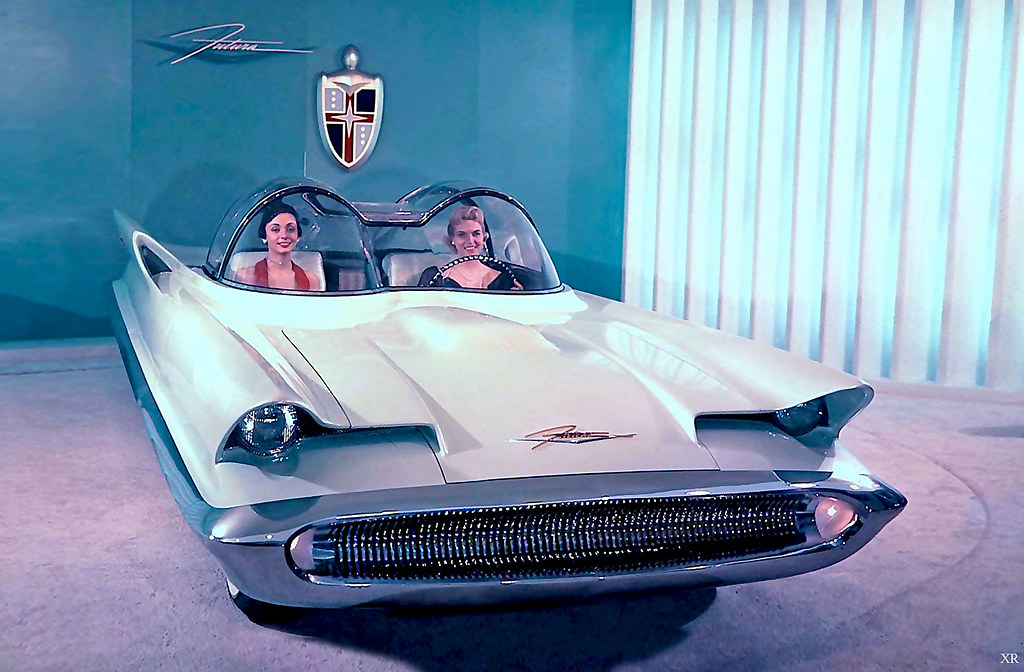
12. **Lincoln Futura**:Long before it became the iconic crime-fighting machine of Gotham, the Lincoln Futura concept car first captivated audiences in 1955 with its stunning pearlescent frost-blue paint. This magnificent vehicle was not merely an American creation; it was hand-built in Italy by the legendary Ghia design house, commissioned for an astronomical sum of $250,000 at the time. Adjusted for inflation, that figure would exceed $2.7 million today, underscoring its bespoke and incredibly luxurious status.
The Futura’s design was a true spectacle, featuring an unmistakable double-bubble canopy that seemed to float above the passenger compartment, offering an expansive view of the world. Complementing this daring roofline were outrageous, hooded headlights and dramatic, sweeping fins that gave the car an undeniable sense of motion and futuristic elegance. It was a vision of tomorrow, crafted with exquisite attention to detail.
After its initial show circuit career concluded, the Futura faced an uncertain future, as is often the case with concepts. However, its story took an unexpected and legendary turn when renowned customizer George Barris acquired it for the remarkably humble sum of just $1. This seemingly insignificant transaction would pave the way for one of the most famous automotive transformations in history, demonstrating an astute eye for potential.
In a whirlwind three weeks, Barris masterfully reimagined the Futura, transforming its elegant lines into the menacing and instantly recognizable 1966 Batmobile. This iconic vehicle went on to become a cultural phenomenon, cementing its place in television history. The Batmobile’s incredible journey culminated years later when it sold at auction for a staggering $4.62 million, making George Barris’s $1 investment perhaps the most incredible return in automotive history.
Read more about: The 14 Wildest Rides Driven by Hollywood’s Funniest Folks on Screen!
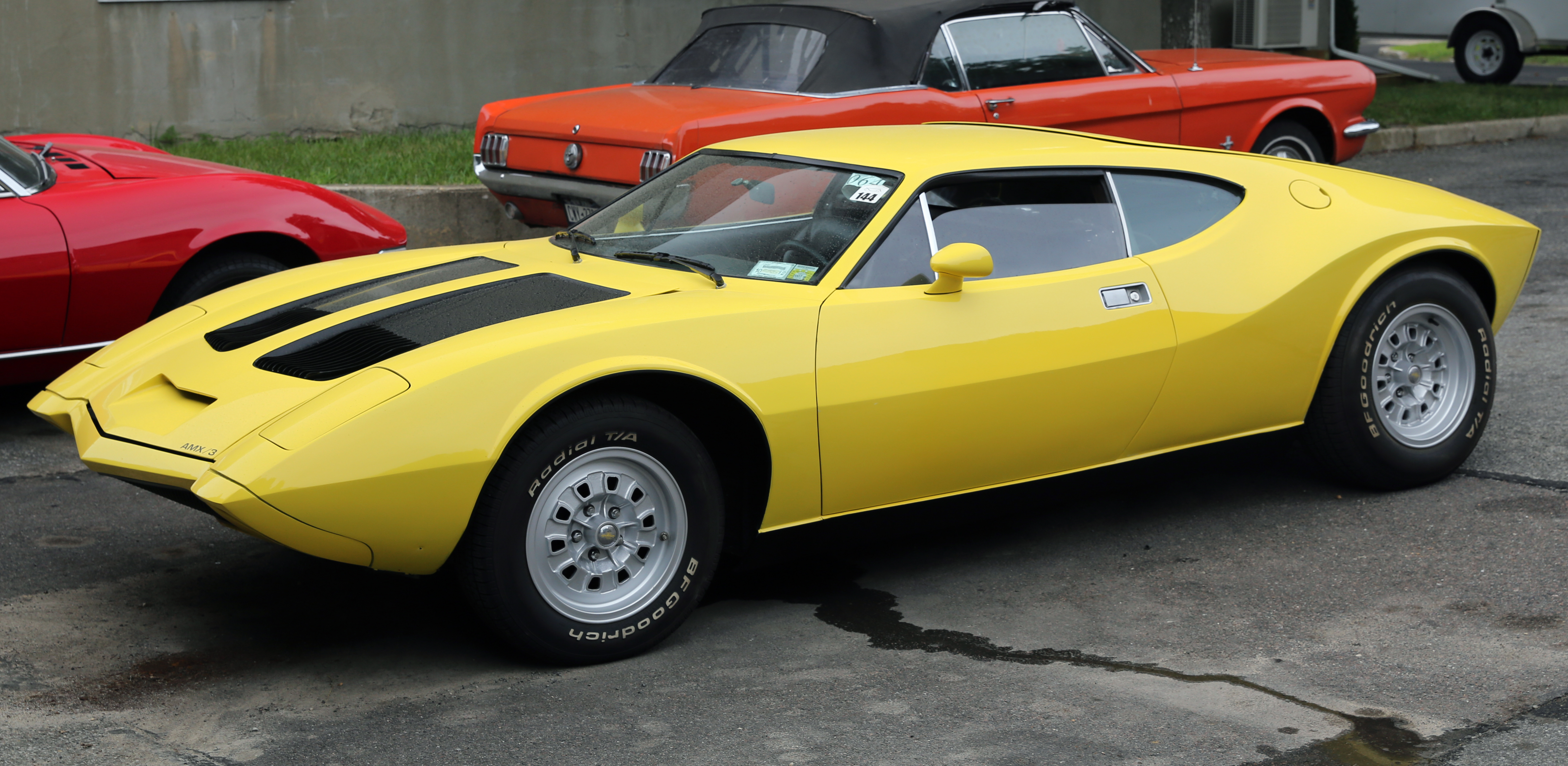
13. **AMC AMX/3**:In 1970, American Motors Corporation, often seen as a smaller player in the fiercely competitive American auto industry, shocked the world with the unveiling of the AMC AMX/3. This stunning Italian-American masterpiece was a bold foray into the mid-engined exotic car segment, showcasing an ambition and design prowess that few had expected from the brand. It was a genuine supercar challenger.
This mid-engined marvel was not an in-house solo effort; it was developed with crucial assistance from none other than Giotto Bizzarrini, a legendary engineer celebrated for his work on iconic vehicles like the Ferrari 250 GTO. This collaboration imbued the AMX/3 with genuine European exotic car DNA, enabling it to hit a top speed of 170 mph and tackle corners with a precision and agility typically associated with vehicles costing twice as much.
AMC initially harbored ambitious plans to produce as many as 5,000 units per year, signaling a serious intent to compete in the high-performance market. However, a confluence of unforeseen financial troubles plaguing the company and the imposition of stringent new safety regulations ultimately conspired to destroy the promising project. It was a heartbreaking end for a car that held so much potential.
Tragically, only six prototypes of the AMX/3 were ever completed before the project was officially canceled. Despite its limited numbers and unfortunate fate, one of these prototypes even managed to outperform the benchmark De Tomaso Pantera during rigorous testing, a clear indication of its exceptional engineering and performance capabilities. The AMX/3 remains a tantalizing glimpse into what AMC could have achieved.
Read more about: Recall These? The Ultimate Showdown: 12 Coupes That Went From Hot to Humiliating in the Great American vs. European Car Wars

14. **Chevrolet Astro II**:This particular concept, the Chevrolet Astro II, presents a unique challenge to our exploration of vanished automotive visions. Unlike its counterparts on this list, which left behind a trail of design documents, prototypes, or even photographic evidence and detailed specifications, the Astro II appears to have truly embraced the ‘vanished’ moniker to an extraordinary degree.
The very scarcity of concrete information surrounding the Astro II serves as a poignant testament to the ephemeral nature of some concept cars. While many concepts are meticulously documented, photographed, and often preserved in collections or archives, the Astro II seems to exist more as a whisper in the annals of automotive history. Its presence in this discussion is largely symbolic, representing those ambitious projects that, for reasons lost to time or corporate discretion, faded away so completely that even their core design principles or intended purpose remain largely obscure to us today.
It forces us to ponder the countless hours of engineering, design, and vision poured into vehicles that, despite their initial unveiling, left scarcely a ripple in the broader automotive consciousness. The Astro II, in its enigmatic absence of detail, encapsulates the ultimate fate of some concepts: not just unbuilt, but almost entirely forgotten, proving that sometimes, even groundbreaking ideas can slip through the cracks of history, becoming truly invisible echoes from a future that never arrived.
Our journey through these vanished concepts underscores a fundamental truth about automotive innovation: for every production car that graces our roads, there are countless visionary machines that remain tantalizing glimpses of what could have been. These forgotten concepts, whether doomed by corporate politics, economic realities, or simply the relentless march of technological progress, each represent a unique chapter in the ongoing story of human ingenuity. They remind us that the spirit of exploration and the relentless pursuit of the next great idea continue to drive the automotive world, often in ways that only a keen eye for history can truly appreciate. While their physical forms may be tucked away, their influence, both subtle and profound, continues to shape the cars we drive and the dreams we hold for the future of transportation. They are not merely relics; they are blueprints of ambition, whispers of potential, forever challenging us to imagine what’s next on the horizon.”
Read more about: The Malaise-Era Missteps: Unearthing the Worst Classic Car Accessories of the 1970s
, “_words_section2”: “1945



